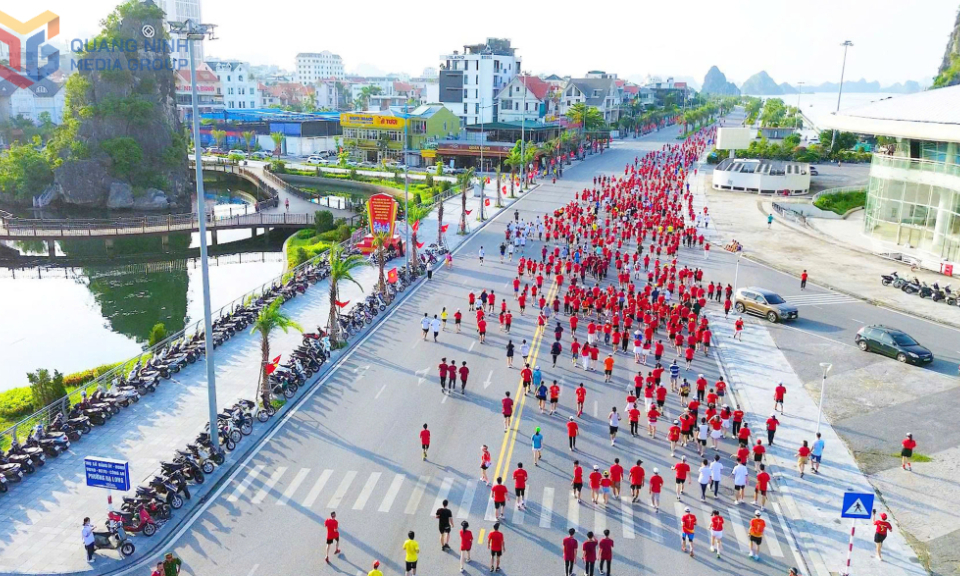Việt Nam among the fastest growing economies despite difficulties: economists
HSBC raised the GDP growth forecast for Vietnam in 2022 to 7.6 per cent. Việt Nam's GDP in 3Q2022 increased by 13.67 per cent compared with the same period last month.
Economic experts have asserted that Việt Nam's current success was not luck. While early and careful preparation was attributed to the success, many problems need improving, according to economists.
The economists spoke at a seminar on Market Outlook 2022 held by HSBC in Hà Nội on Tuesday.
At the seminar, participants gave opinions and views to look back at Việt Nam during the COVID-19 pandemic. They looked at the country's current and future economic situation.
Opening the seminar, Tim Evans, CEO of HSBC, said despite the global challenges, Việt Nam's very much on the move, continuing to perform, even a regional outperformer in terms of GDP growth.
HSBC raised the GDP growth forecast for Việt Nam in 2022 to 7.6 per cent. Việt Nam's GDP in 3Q 2022 increased by 13.67 per cent compared with the same period last month, when Việt Nam's economy was seriously impacted by COVID-19.
Due to a broad-based recovery, domestic demand is back on track, and manufacturing and exports continue to roar. As a result, the country registered an 11-year high growth rate of 8.83 per cent in the first nine months of this year.
Tim said that in early September, Moody's upgraded Việt Nam to Ba2. Following an upgrade by S&P, Việt Nam is now only one notch below investment grade. Fitch upgraded Việt Nam to BB in May 2018 and currently has Việt Nam BB rating on a positive outlook.
Lower middle-income Việt Nam wants to become a developed country, reaching high income by 2045. The upper-middle class is expected to grow by an average of 17 per cent until 2030. Moreover, Việt Nam is set to become the 10th largest global consumer market by 2030, bigger than Germany and UK.
In addition, PMI – a measure of manufacturing confidence in the economy – posted 52.5 in September. Although this number was down compared with the previous month, Việt Nam's manufacturing conditions have improved significantly, following the ASEAN's improvement trend, signaling a solid improvement in the manufacturing sector's health.
Tim also recalled a comment on LinkedIn that said: "The US is said to be the land of opportunities, but Việt Nam has the people of opportunity. It's the people that make the difference".
"This is shown in how Vietnamese people dealt with COVID-19 and re-build the economy together as one, as well as through all the highs and lows, overcoming all challenges laid before them throughout their history," said Evans.
Also, at the seminar, Alain Cany, Chairman of EuroCham and Country Chairman of Jardine Matheson Vietnam, told participants that Việt Nam's economy and investment climate are concerned.
Global markets are buzzing too, as the world economy grew 5.5 per cent in 2021, its fastest rate since 1976. As a result, Alain said there was a renewed sense of optimism that we hadn't seen for some time.
He mentioned that following Russia's military operation in Ukraine, war and turmoil were brought to Europe's doorstep, and the global economy suffered a serious blow.
The resulting spikes in energy prices have rippled throughout global markets, driving up commodity prices and disrupting supply chains. As a result, consumer goods, textiles, electronic components, and so on are becoming increasingly expensive and hard to source. Developing, manufacturing-focused countries such as Việt Nam are particularly vulnerable to these pressures.
He further said that these impacts would intensify and accelerate as the conflict drags on. For the foreseeable future, risks and uncertainty will remain high.
He also emphasised challenges facing Việt Nam that China continues its lockdowns in the face of the new pandemic reality. According to the Ministry of Industry and Trade, nearly 55 per cent of Việt Nam's raw materials and accessories used in the textile, garment, and footwear industries are imported from China. As long as China continues to pursue zero-COVID ambitions and forces its resulting logistics and supply bottlenecks, Việt Nam will have difficulty obtaining essential inputs like electronic components, machinery parts, fabrics, and chemicals. This threatens Việt Nam's export growth.
Global labour shortages further constrain growth. In 2022, the International Labour Organisation predicts a global deficit in hours worked equivalent to the loss of approximately 52 million full-time jobs worldwide. As a result, Việt Nam struggles to fill the jobs needed to maintain rapid economic growth.
These factors have reduced investor confidence in Việt Nam and worldwide. In Q3 2022, the EuroCham Business Climate Index (BCI) showed decreased confidence in Việt Nam's investment climate, dropping to 62. There have also been downward revisions to international growth forecasts by the UN, the World Bank, the IMF and the OECD. While global uncertainty persists, Việt Nam's prospects are reassuring.
According to Alain, the World Bank predicts a weak 2.8 per cent global growth for 2022, while Việt Nam is expected to grow 7.2 per cent. This has been driven by Việt Nam's young, dynamic, and increasingly tech-savvy workforce of 56 million, making it one of the world's largest labour forces in percentage and absolute numbers.
Considering Việt Nam's high-quality and affordable labour offerings, it's no surprise that foreign investors want to move manufacturing operations here. As a result, export-oriented manufacturing and inbound foreign direct investment are driving Việt Nam's economic growth. As of 2021, Việt Nam's exports accounted for 19 per cent of its GDP, an increase from less than 1 per cent in 2010. In fact, the country's export market has now surpassed Malaysia and Thailand.
He mentioned that Việt Nam needs to simplify business to increase investment, knowledge sharing, and tech transfers. For this, it is an absolute necessity that Việt Nam's legal framework, administrative procedures, and business incentives are given high priority. Next, public and private investors need to accelerate the green transition.
Alain emphasised that since the Việt Nam Government's Law on Public-Private Partnership took effect in early 2021, the number of PPP projects has declined. As a result, in 2021 and 2022, almost no private money was invested in public infrastructure.
This is because currently, the Government's legal framework is too simplistic, does not clearly define investor rights, and is inadequate for regulating many of the main issues associated with PPPs. Alain hopes the Government will further streamline administrative procedures and develop a comprehensive legal framework so that FDI companies can make a greater contribution.
Meanwhile, Frederic Neumann, Chief Economist of Asia Economic Research Division - HSBC, stated that "dark clouds" are covering the global economy, which is inflation in the US and Europe. There is still no sign of cooling down, accompanied by a strong increase in interest rates by the Fed, which also pushed up the dollar's price.
Another factor that has a great impact on Việt Nam's economic activities is China. The economy is slowing down, the labour market is struggling, consumer spending is falling, and demographic problems are occurring.
According to the latest United Nations Population Fund data, Frederic said China's population growth would peak and then decline. Meanwhile, India's population growth will surpass China's from the beginning of next year and become the most populous economy.
As China's population has been ageing rapidly, the number of working-age people has shrunk. This also has impacted Việt Nam, as the shrinking labour force will pressure wages, workers and industries.
Accordingly, businesses have moved to Southeast Asian countries, including Việt Nam. As a result, Việt Nam is in a strong position to receive opportunities to attract businesses with the advantage of labour.
Frederic said Việt Nam's growth rate remains solid, with a six per cent forecast for next year and among the countries with the fastest GDP growth in the world.






